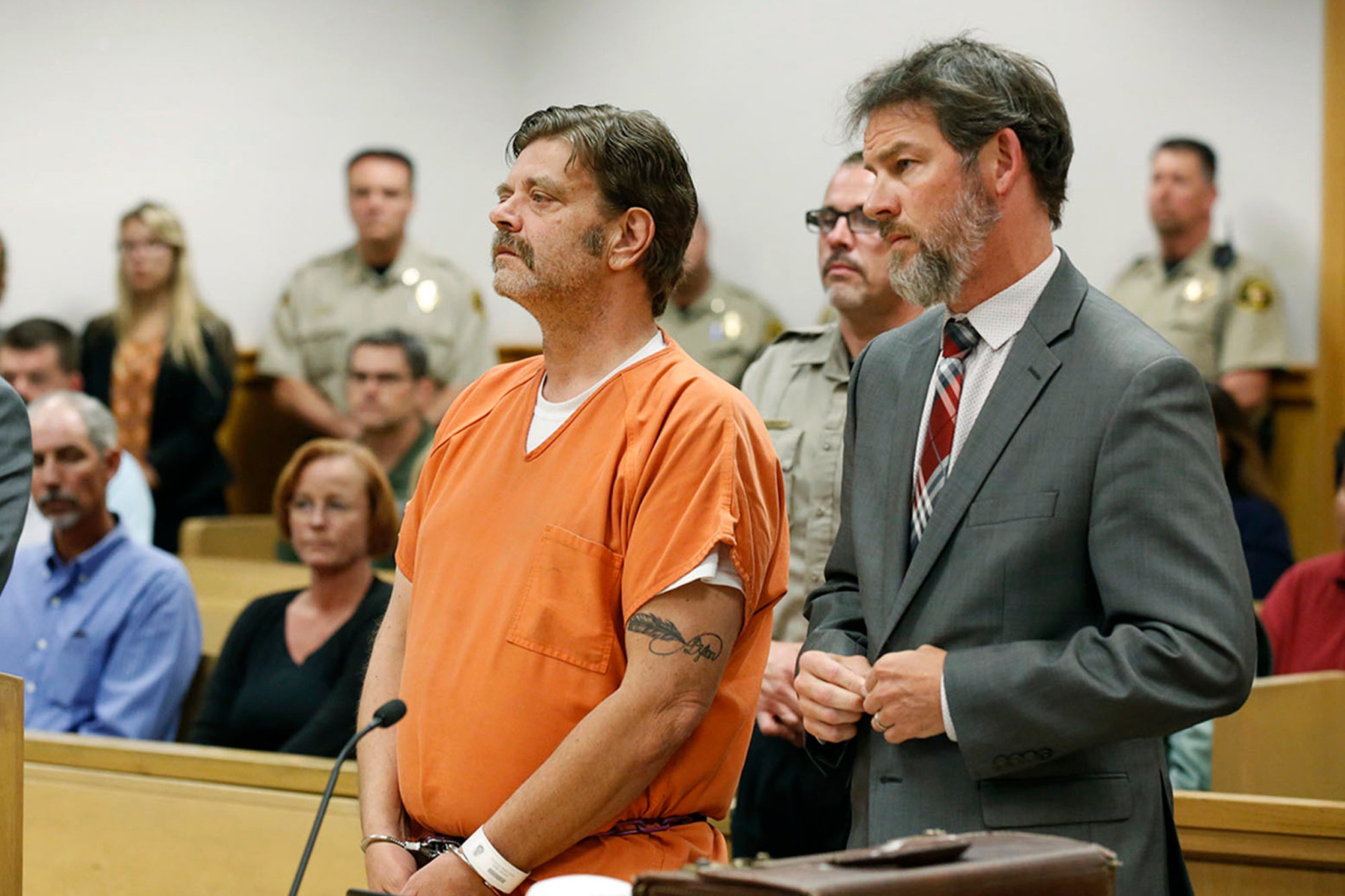Father accused of killing son in 2012 convicted of murder
A Colorado father has been convicted of murder and child abuse in the 2012 disappearance of his 13-year-old son

Your support helps us to tell the story
From reproductive rights to climate change to Big Tech, The Independent is on the ground when the story is developing. Whether it's investigating the financials of Elon Musk's pro-Trump PAC or producing our latest documentary, 'The A Word', which shines a light on the American women fighting for reproductive rights, we know how important it is to parse out the facts from the messaging.
At such a critical moment in US history, we need reporters on the ground. Your donation allows us to keep sending journalists to speak to both sides of the story.
The Independent is trusted by Americans across the entire political spectrum. And unlike many other quality news outlets, we choose not to lock Americans out of our reporting and analysis with paywalls. We believe quality journalism should be available to everyone, paid for by those who can afford it.
Your support makes all the difference.A Colorado father has been convicted of second-degree murder and child abuse resulting in death in the 2012 disappearance of his 13-year-old son.
A jury has found 59-year-old Mark Redwine guilty of the charges on Friday. Redwine was indicted in 2017 in connection with the disappearance of Dylan Redwine, who was reported missing on Nov. 19, 2012, while on a court-ordered Thanksgiving visit to his father's home outside the city of Durango.
Redwine did not show any visible reaction when the verdicts were read as he stood with his hands clasped in front of him.
Dylan Redwine’s remains were found a few miles from his father’s home in 2013, and hikers found his skull in 2015.
Prosecutors argued that Redwine killed Dylan in a fit of rage after they argued over embarrassing photos of Redwine wearing women's lingerie and eating feces from a diaper. Dylan's older brother testified that Dylan discovered the photos before he went missing.
Redwine, who didn't testify at trial, told investigators he left Dylan alone at home to run errands and returned to find him missing. Defense attorneys suggested the photos have no connection to Dylan Redwine’s death and that the boy ran away and may have been killed by a wild animal.
The case drew national attention when Redwine and the boy’s mother, Elaine Hall, leveled accusations at each other during appearances on the syndicated “Dr. Phil” television show in 2013.
Hall testified at trial that she sent Dylan to his father’s house on Nov. 18, 2012, learned he was missing the next day and immediately drove six hours to southwestern Colorado’s La Plata County to search for her son. Hall said she had no knowledge of her son confronting his father about the photos.
Hall almost immediately suspected her ex-husband wasn’t telling the full truth about their son’s disappearance, text messages introduced as evidence suggested. Two hours after learning Dylan was missing, Hall texted Mark Redwine.
“He wouldn’t just leave,” she wrote. “He would have called me. I am so suspect of you right now. How could he just disappear?”
Public defender Justin Bogan suggested that her account was tainted by a contentious divorce and custody battle with Redwine. Bogan also suggested that Hall’s appearance on national TV turned public opinion against her ex-husband and influenced the direction of the police investigation.
Hall insisted she spoke with media and attended a protest at Mark Redwine’s house in an effort to bring Dylan home.
“I figured he was safe because he was with his dad, and I was devastated that no one knew where my son was,” she said.
Throughout the trial, prosecutors doubled down on the compromising photos of Redwine, arguing the father-son relationship was in decline long before Dylan’s disappearance. Prosecutors also focused on comments Dylan made to family and friends about dreading the court-ordered visit.
Public defender John Moran said during his opening statements that Dylan ran away from home and suggested he could have been attacked by a bear or a mountain lion. He referred to an injury on Dylan's skull as a tooth mark.
A forensic anthropologist, Diane France testified that Dylan suffered a fracture above his left eye. Two marks on the boy’s skull were likely caused by a knife or sharp tool at or near the time of death, France said.
Meanwhile Redwine's defense said in closing arguments that expert testimony had showed Dylan’s skull was still in a peri-mortem state in 2015. He said that means it retained elasticity and wetness, making it susceptible to environmental factors like animal scavenging for three years before it was discovered.
Bogan called the investigation “biased” and “sloppy” because of evidence destruction by an expert who broke off a piece of Dylan’s skull during their examination and a scientist who revealed in court that the prosecution gave police reports to them before their testimony.
Fred Johnson, special deputy district attorney, told jurors that investigators found traces of Dylan’s blood in Redwine’s living room and that a cadaver-sniffing dog alerted them to the smell of human remains in the back of Redwine’s truck and on his clothing.
But Moran said the “infinitesimally small” amount of blood found in the living room is likely to be found in anyone’s house. He also referred to the use of the dog as “junk science.”
Redwine was arrested in Bellingham Washington following a grand jury indictment in 2017. At the time, prosecutors said “compromising photographs” were a point of contention between Redwine and Dylan. They didn't elaborate.
Redwine will be held in custody. His sentencing hearing is scheduled for October.
___
Nieberg is a corps member for the Associated Press/Report for America Statehouse News Initiative. Report for America is a nonprofit national service program that places journalists in local newsrooms to report on under-covered issues.